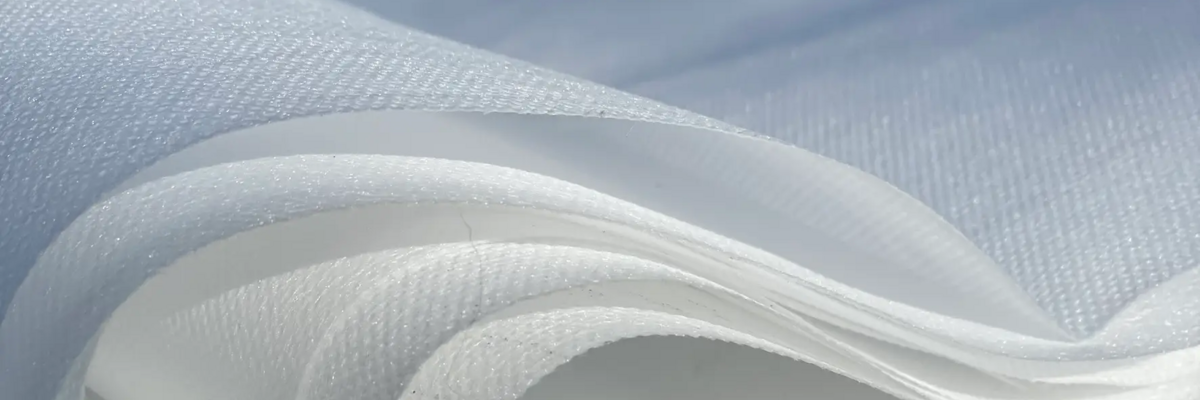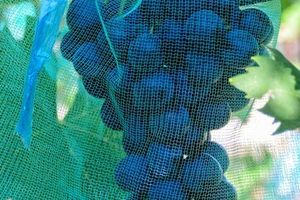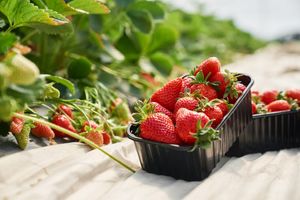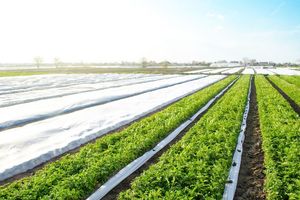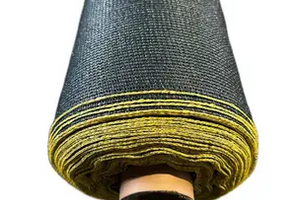Agrofibre is considered an important element in agriculture and horticulture. It helps improve plant growth, protects them from adverse weather conditions and pests, and also helps optimize the water regime. There are two main types of agrofibre: white and black. It is interesting to understand the differences between them in order to choose the best option according to your specific needs.
Application options and advantages of white agrofibre
Now white agrofibre is made of polypropylene and has many uses due to its unique properties. Among its main advantages are:
- White agrofibre is often used to cover plants during spring and autumn frosts. It creates a thermal insulation layer that retains the heat of the earth and protects plants from the cold without preventing the penetration of light and air.
- It is characterized by high light transmittance, which allows plants to receive sufficient sunlight for photosynthesis. This is especially important for young seedlings and seedlings that need a lot of light for active growth.
- The material helps create an optimal microclimate under the shelter. It retains heat and moisture, which helps maintain stable temperature and humidity around plants, accelerating their growth and development.
- It also protects plants from insects and small animals by creating a physical barrier. This helps reduce the risk of plant damage and reduces the need to use chemical pesticides.
It is actively used for covering seedlings and young plants in greenhouses and open ground. It protects them from adverse weather conditions and helps create optimal conditions for growth. Lightweight and mobile greenhouses and greenhouses are made from white agrofibre, which are easy to install and remove. They provide reliable plant protection. It is also applicable for protecting flowering plants from night frosts, which is especially important for crops with a long flowering period.
Benefits and uses of black fiber
Modern black agrofibre It is made of polypropylene, but has a slightly different purpose and properties. Among its main advantages are:
- It effectively suppresses weeds. It prevents light from penetrating the soil, which prevents weeds from appearing and helps retain moisture. This significantly reduces the need to use herbicides and simplifies plant care.
- Black agrofibre helps retain moisture in the soil, preventing it from evaporating. This is especially important in regions with hot and dry climates, where the problem of water shortage is especially acute.
- It absorbs heat from the sun and helps maintain optimal soil temperatures. This helps the soil warm up faster in the spring and retain heat at night.
- Its use improves yields by reducing competition with weeds and creating more favorable conditions for vegetation growth.
Black is used very actively for mulching the soil. It helps retain moisture and improve soil structure. It is also used to cover beds and flower beds with ornamental plants and vegetables. It protects the plants, which is very important. In landscape design, such agrofibre is used to create flower beds, paths and other decorative elements. It prevents the germination of weeds and maintains the aesthetic appearance of the areas.
What's the difference between them?
To understand how to choose, you need to study the main differences. Among the main nuances are:
- White agrofibre allows light to pass through, making it ideal for covering plants. Black, on the other hand, blocks light, which helps fight weeds.
- White agrofibre is more often used to protect against frost and create greenhouse conditions, while black agrofibre is used to mulch the soil and suppress weeds.
- Both types of agrofibre help regulate temperature, but white agrofibre retains heat better, while black agrofibre warms the soil by absorbing solar heat.
You just need to take into account your specific needs.






